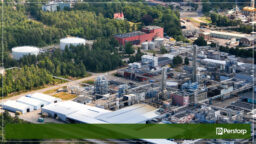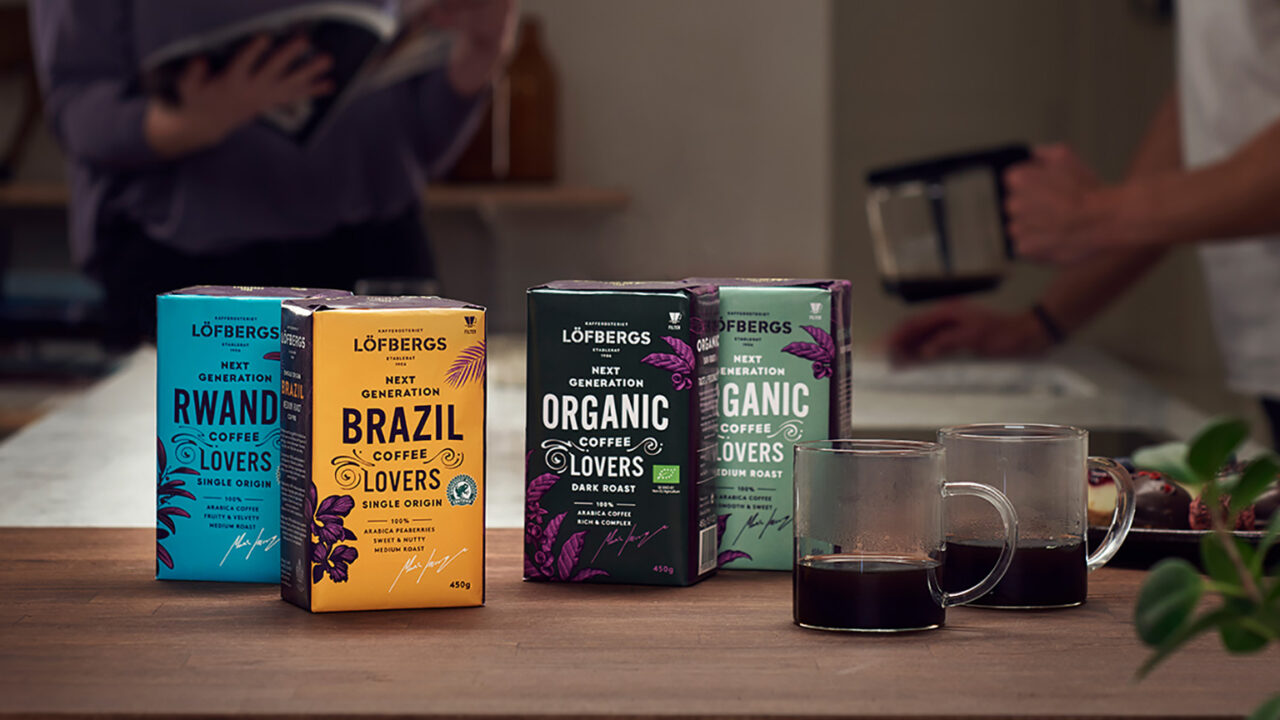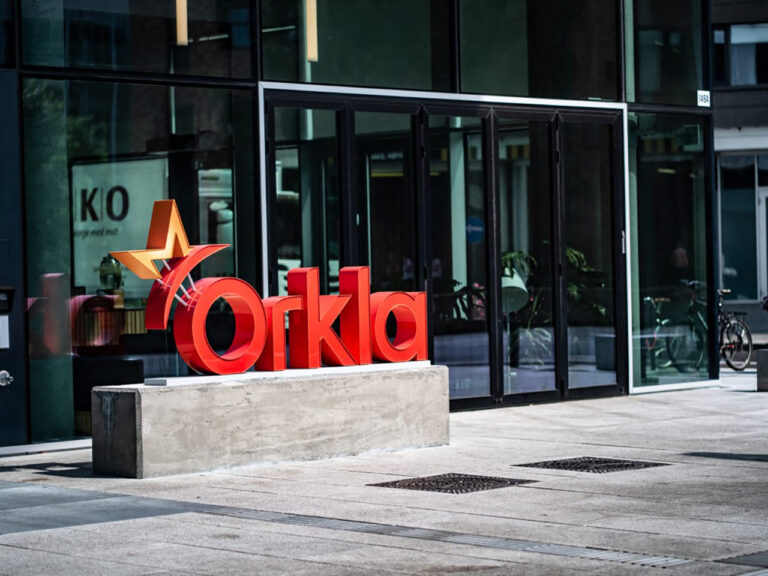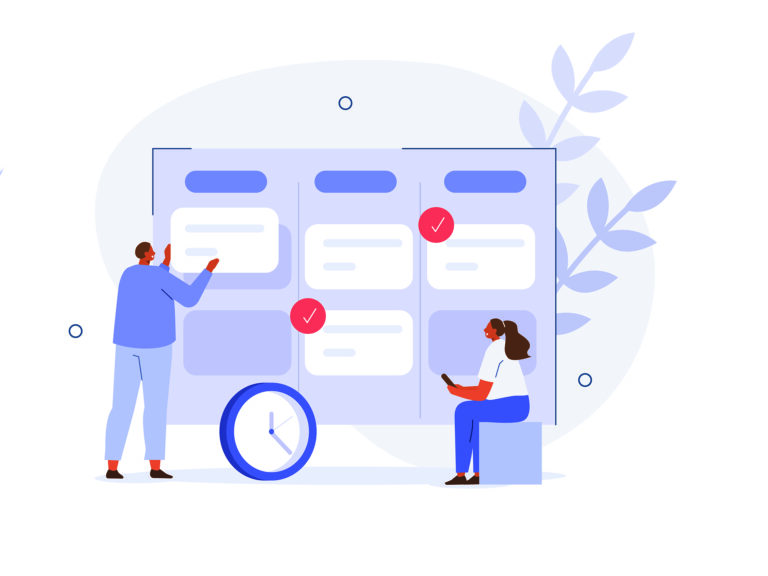Coffee
Sweden is a nation of coffee-lovers. Coffee drinking is part of the culture and the average Swede gets through four cups per day. Löfbergs, with its characteristic purple and yellow branding, is synonymous with coffee tradition in Sweden. The family-owned company has been operating from a base in Karlstad since the early 1900s.
A passion for good coffee, as well as a commitment to sustainability and fairness has served the Löfberg family well. Today the company is one of the largest coffee producers in the Nordics, and among the world’s largest importers of organic and fair trade coffee.
The majority of Löfbergs coffee is still roasted and packaged in Karlstad. From here, it is shipped across Scandinavia, to the Baltics, the UK and more recently, Canada.
A tricky balancing act
Löfbergs serves a broad spectrum of customers – from major retailers and national restaurant chains, to small, independent cafés. Many expect next-day delivery. The company buys directly from growers’ cooperatives and coffee retailers in the Equatorial belt, and ships the beans back to Sweden – a journey that typically takes eight weeks. Löfbergs needs to be able to meet demand, but at the same time, doesn’t want to over-purchase. If they don’t get it right, their purchasers end up having to buy from the spot market, which is a lot more expensive.
Jerker Friberg, Logistics Manager at Löfbergs highlights the challenge, “When your customers expect next-day service, but procurement lead times are measured in weeks and months, and production involves a delicate roasting process, you have quite a challenge on your hands. Having a clear and accurate demand plan becomes essential to balance both stock and service levels.”
Getting a handle on production planning
In 2012, Löfbergs began looking at better and more efficient ways to respond to the ever-changing demand for its coffee. In its search for a forecasting tool, the team recognised that the production side of the business also lacked adequate planning.
The planning functionality offered by the MRP system didn’t take production capacity into account. Jerker, who was planning manager at the time explains, “The plans we had available to us would only tell us how much to buy and produce, but not answer the more critical questions of how, where and when. Optimity’s Supply Chain Optimizer offered this functionality and has helped us greatly. We now have the ability to quickly generate optimized production plans that take into account the most up to date forecasts and order situations, while respecting the capacity and current load of the plant.”
“The plans we had available to us would only tell us how much to buy and produce, but not answer the more critical questions of how, where and when.”
Jerker Friberg,
Logistics Manager
It all starts with the forecast
However, the real cornerstone of the Löfbergs solution is the Optimity demand planning tool. Up until this point, Löfbergs was using Excel spreadsheets for the forecasting process. “We looked three months back, averaged that into the future, and adjusted the numbers based on knowledge and gut feeling. We didn’t have any ability to plan on a longer time horizon,” Jerker recalls. The lag in demand information presented the company with some major challenges. He continues, “We wanted to introduce a level of standardization in forecasting, and we wanted to have more trustworthy information at an earlier stage.”
Optimity’s Demand Forecaster offered the solution. Today Löfbergs has a standardized forecasting process across the business. “The Demand Forecaster allows us to establish a statistical forecast that far exceeds the quality of what we had available to us before. There’s now greater trust in the baseline forecast, which removes the need for the manual tweaking of numbers,” says Jerker.
Accurate forecasts = smarter planning = better business
Forecasting now operates at a three to four month time horizon and Löfbergs uses the forecast daily to guide production planning, procurement and delivery. The company is able to operate with much lower stock levels across the supply chain because they have more confidence in the forecasts.
Jerker continues, “Since we’re all working from the same plan, and using the same tool to make adjustments, we are in a much better shape to communicate any changes across the business. It all works together.” Today the team has a greater awareness and understanding of the forecasting process and the importance of forecasting accuracy. “With more trustworthy demand plans, we can not only serve our customers better with less stock, but we can also plan our sourcing to get better prices, and avoid expensive spot market purchases.”
Jerker stresses that one of the reasons for choosing Optimity as a partner was its proven expertise. “It soon became clear that with Optimity we didn’t just have a software vendor, but an experienced partner that could provide us with real know-how. They really understand supply chain planning and the many challenges it presents to a business. Also their deep knowledge of integration with ERP systems such as our Movex solution was of great value to us, and helped facilitate the whole implementation process.”
“With more trustworthy demand plans, we can not only serve our customers better with less stock, but we can also plan our sourcing to get better prices, and avoid expensive spot market purchases.”
Jerker Friberg,
Logistics Manager
Next steps
With solid forecasting and planning processes in place, Löfbergs is better equipped to deal with the demands of balancing long lead times with next-day requirements from customers. The next step is to look at Optimity’s ABC Analyser tool, which will help Löfbergs to understand which products and customers to prioritize to achieve the best business results.
Jerker finishes up by offering some advice to companies considering similar projects. “When we started out, our focus was on a short term planning horizon. However it soon became clear to us that we had more to gain from addressing the bigger picture. If I were to do the project over, I’d take a top-down approach and deal with the long-term planning first. It’s a much easier way to get results quickly.”
About Löfbergs
Löfbergs is a coffee roastery based in Karlstad, Sweden. The company was founded in 1906 by brothers Josef, Anders and John Löfberg. Today, Löfbergs is one of the largest producers of coffee in the Nordic region. The company maintains its status as a family owned and operated business, and is currently headed by the third and fourth generations of the Löfberg family.
Get all the latest industry trends, updates & news from Optimity
About Löfbergs
Karlstad, Sweden
300
1.5 billion SEK















